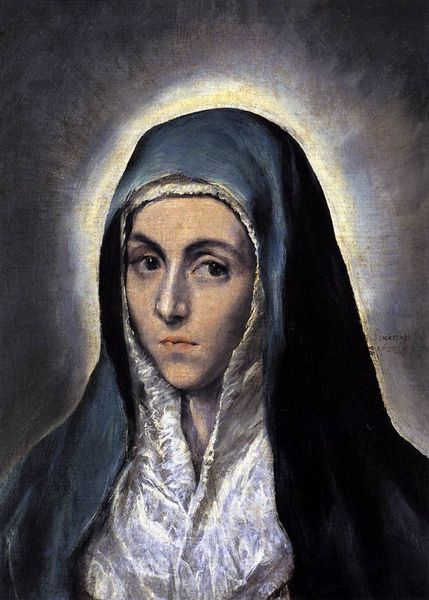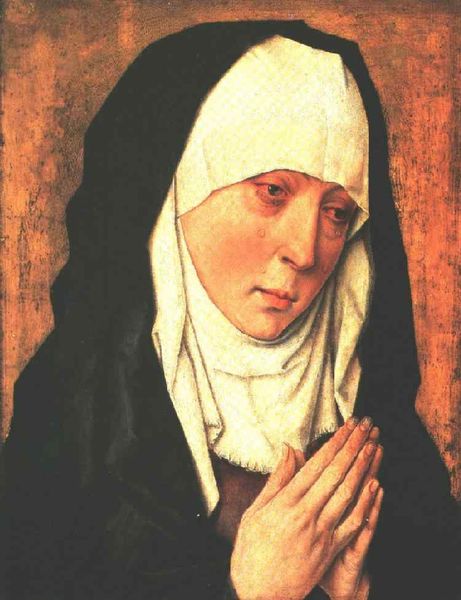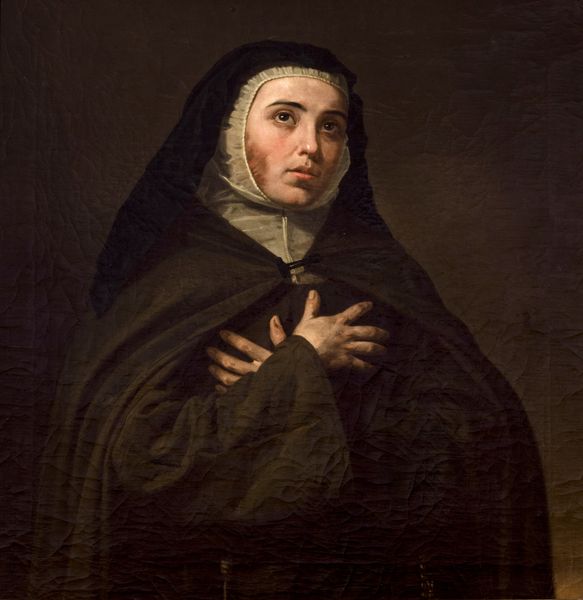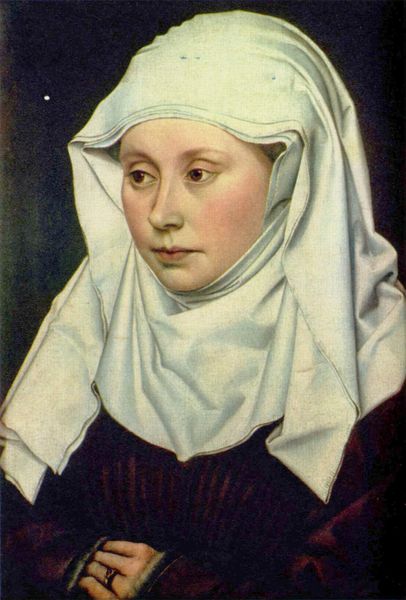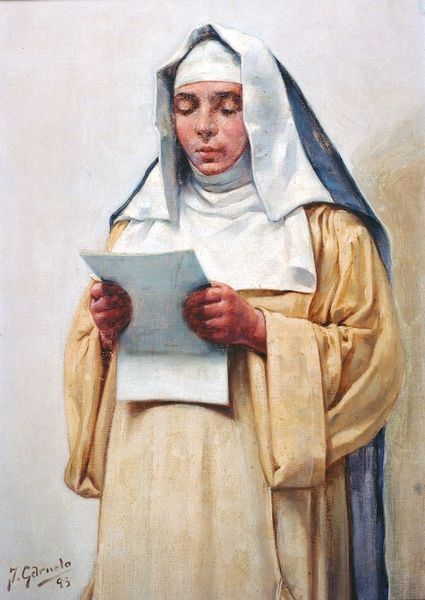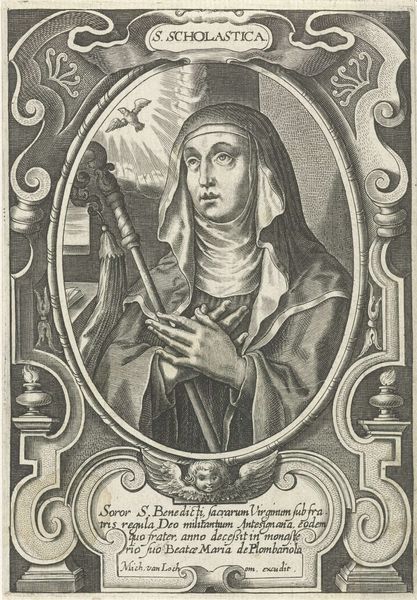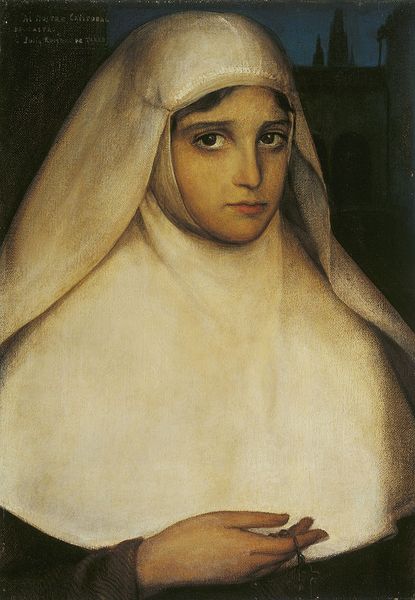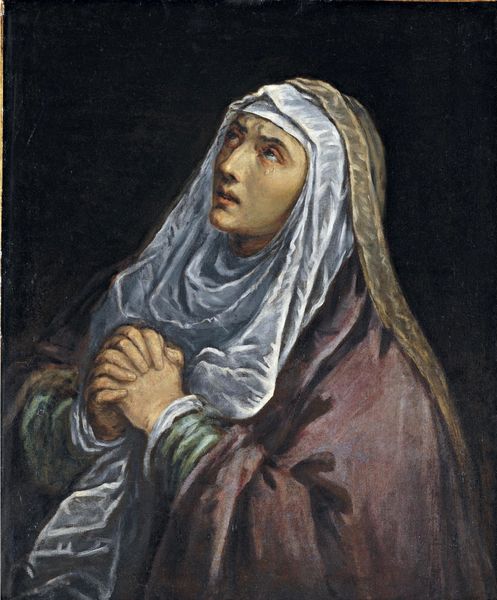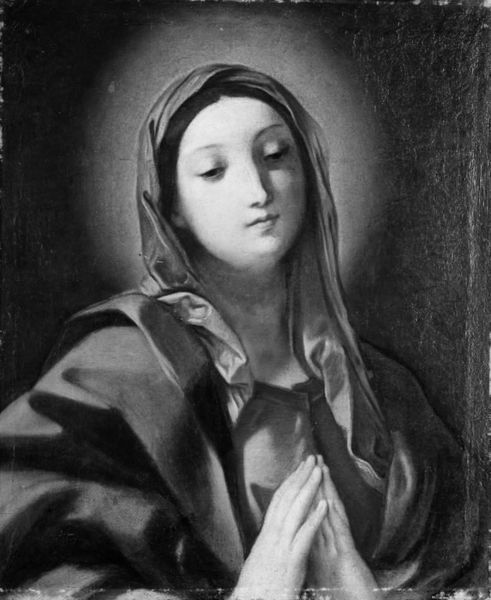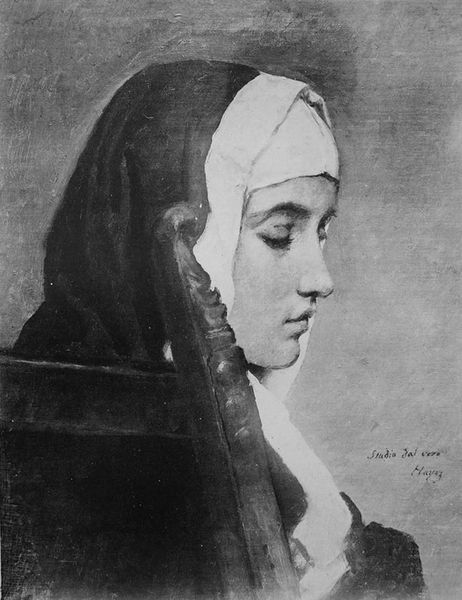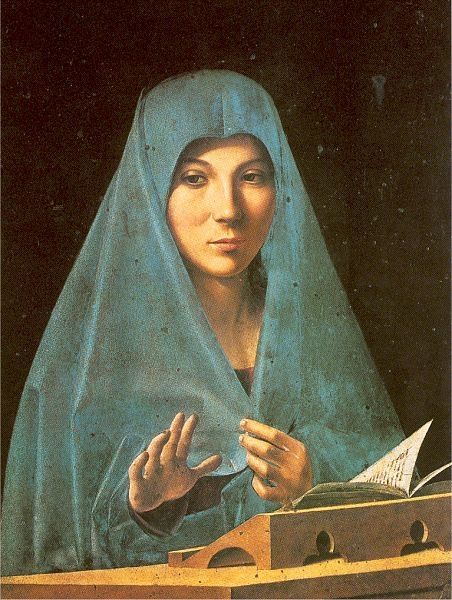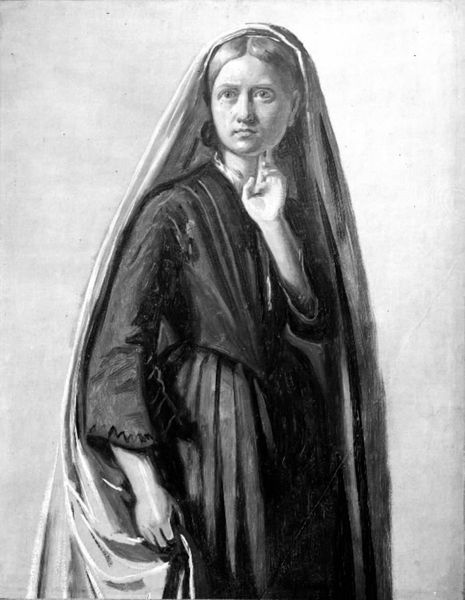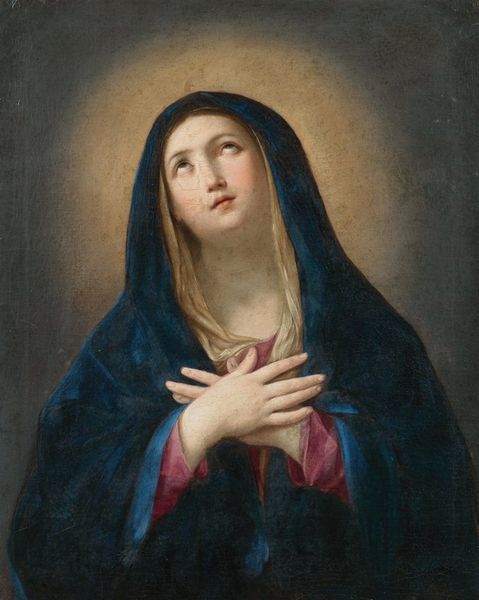
painting, oil-paint
#
portrait
#
painting
#
oil-paint
#
mannerism
#
figuration
#
christianity
#
history-painting
#
italian-renaissance
#
virgin-mary
Dimensions: 52 x 41 cm
Copyright: Public domain
Editor: We're looking at El Greco’s "Virgin Mary," painted around 1600. It's an oil painting and has a very somber yet elegant feel. There’s such intensity in her eyes. What's your interpretation of the social context around this portrait? Curator: Considering the era, it's important to understand the cultural and political dynamics impacting religious art. El Greco, while working in Spain during the Counter-Reformation, painted Mary with elongated features. It's quite unlike earlier, more naturalistic depictions. It certainly reflects the spiritual fervor promoted by the Catholic Church, and perhaps critiques the opulent excesses of the era. Does the dramatic lighting strike you as politically charged? Editor: Yes, now that you mention it, the way the light emphasizes her face feels deliberate. It almost demands the viewer’s attention, but to what end? Curator: That is precisely where art serves its public role! El Greco prompts reflection on individual piety within the context of institutional religion. How do you feel the Italian Renaissance impacted this expression? Editor: Well, having the training from the Italian Renaissance obviously had an impact. I guess he uses mannerism as a vehicle to display the Counter-Reformation? The emphasis on emotion really sets it apart from earlier Renaissance Madonnas. Curator: Exactly. By distorting the traditional Renaissance style, El Greco creates a highly emotional and personal experience for the viewer, one that serves the goals of the Counter-Reformation but also expresses his distinct artistic vision. Has this perspective given you a new appreciation? Editor: It certainly has! Thinking about the Virgin Mary not just as a religious icon, but as a figure shaped by political and religious forces gives it another layer of meaning. Curator: It’s essential to consider art within the web of societal forces and interpret the artist’s public statement within these factors.
Comments
No comments
Be the first to comment and join the conversation on the ultimate creative platform.
